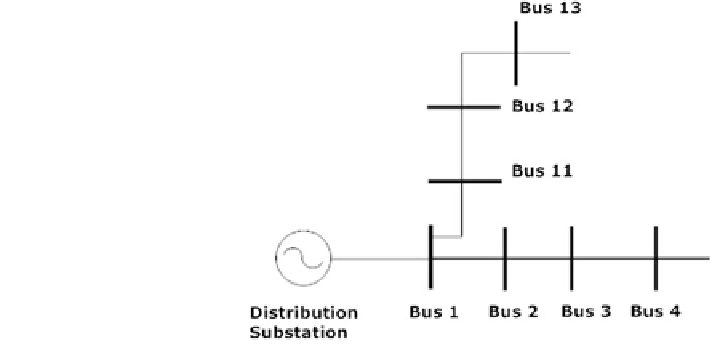Information Technology Reference
In-Depth Information
Fig. 2 An example of radial
distribution system
Due to the challenges posed by the design and operation of the electric power
generation and transmission, they have been the prime area of interest for the
researchers. However, during this development, distribution system remained
untouched. The differences between the developed generation and transmission
system and under-developed distribution system were not able to satisfy the cus-
tomer demands. The major problems occurring in the distribution system (Haghi-
fam and Malik
2007
) were,
High var demand,
High voltage drop,
Reduced system capacity,
High amount of losses in the system,
Inherently unbalanced distribution system, and
Harmonics due to non-linear loads.
ciency apparatuses at the load side are very sensitive in
nature. Their malfunction may result in loss of the manufacturing process and the
associated cost. Thus, the distribution system problems may have signi
The modern, high-ef
cant eco-
nomic impact. Also, in deregulated and competitive schemes, providing reliable and
high-quality power is essential to attract and keep customers. To overcome these
problems a number of methods are developed, such as,
Re-conductoring in primary and secondary feeders,
Feeder recon
guration,
Using distributed generation,
Load balancing between three-phases and feeders,
Load factor improvement with demand side management strategies,
Voltage upgrading, and
Reactive power control by placement and installation capacitors.
In the next section, role of the capacitors in distribution system and their effects
are discussed.

Search WWH ::

Custom Search